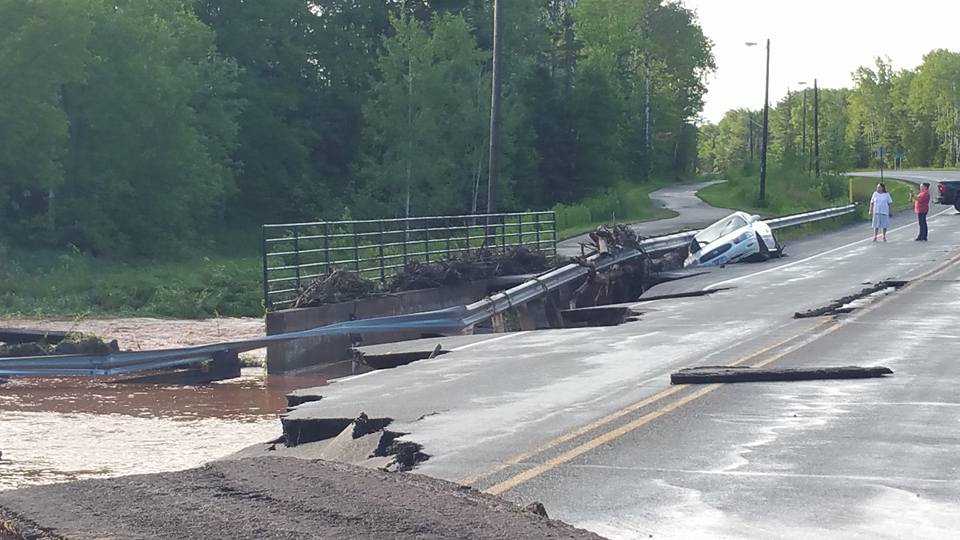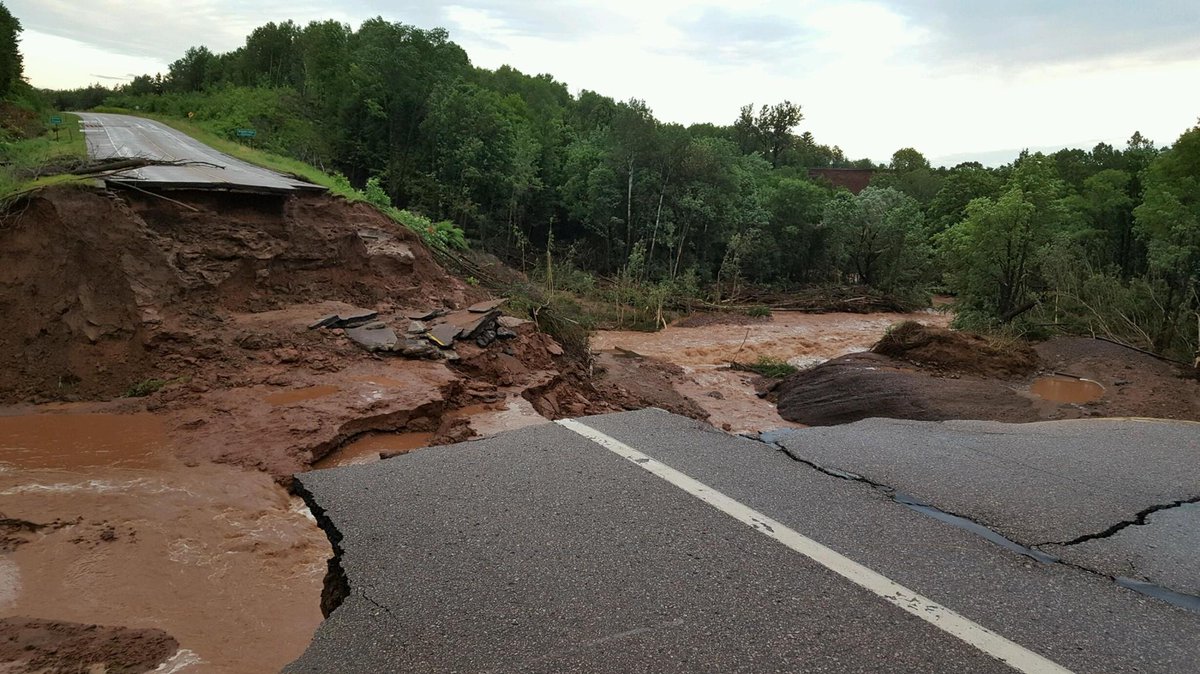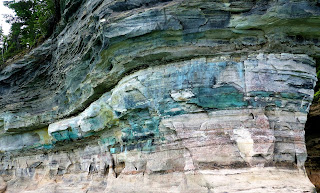We departed Newberry under clear skies and warm temps. The 6 hour drive ahead to our destination near Duluth, MN looked like a piece of cake. The drive across the UP (Upper Peninsula of Michigan) promised to be free of heavy traffic, and fairly level, with clear skies above us and warm temps. Oh, but reality did not meet expectations. Our first challenge: strong winds. As we set out on M-28 West, the road west across UP, winds were averaging 20 mph, gusting to 40 mph. Maneuvering a 10 1/2 ton rig on a two lane road through that type of wind is not exactly a party.
Tuning in to local radio proved to be an experience: One station offered a contest whose prize was a stay-cation in a local town in a furnished cottage, complete with a pontoon boat. The contest was sponsored by a company that sells back-up generators. I guess I won't be entering that contest.
The UP is so rural that you could pick most any place and drive 50 miles in any direction and find yourself in the middle of a Great Lake or the forest. The bigger towns here are Ishpeming, Marquette, Manistique, and Escanaba. Never heard of them? No surprise. The town of Kenton is home to the world-famous bar: Up-Chuck's (no joke).
So what of our crazy drive? At Wakefield, where M-28 ends and Route 2 begins, we started to see significant damage from the storm that passed though here a few days ago. 10 inches of rain was dumped on this area, accompanied by strong winds. Trees were uprooted, and snapped at their bases, and major roads flooded. Including Route 2 just west of Ironwood, the town on the western border of Michigan with Wisconsin, our intended route. So we did what any reasonable traveler would do, we
 |
| Route 2 |
took the detour offered by the state DPW, and followed the signs, a move which set us on the detour from hell. It turned out that not only the main road we needed to take was flooded, but other roads
 |
| One of the other roads we could have taken to get us on our way sooner. |
that might have given us better access to be on our way were flooded as well. The detour took us about 1 1/2 to 2 hours out of our way, through Wisconsin hinterlands, up and down hills and through small towns. We went through one town where the water on Main Street was still at least a foot high, but that was the only access available. Police were there watching as vehicles forded the street. So we plowed through as well. That was in Round Lake, WI. One highway we took was closed on one lane due to ponding water still on the road.
Once we got back on the main road to our destination, it started to pour. We noted as we went over the bridge into Duluth that the bay at the entrance to Lake Superior was brown, like many of the swollen rivers we had seen on our drive, in contrast to the clear blue of Lake Superior.
We arrived at 6:00 local time (accounting for the change to Central time, and after about 9 hours on the road), ready for a glass (or 2) of wine.
















































